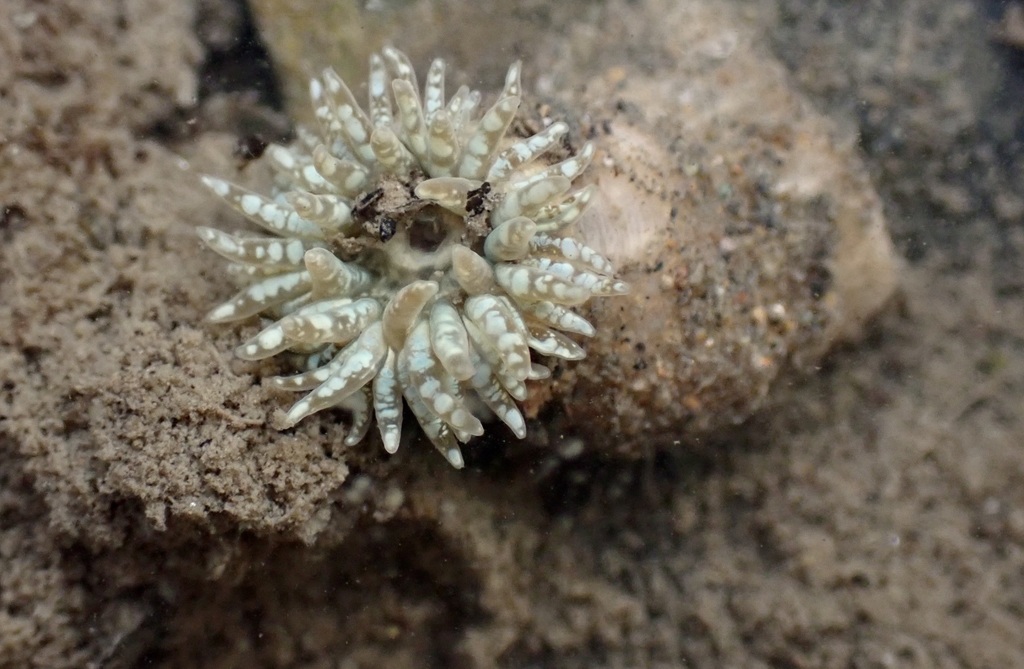
Anthopleura hermaphroditica
Cnidarians-Anthozoans
Armed Hermaphroditic Anemone, Mudflat Anemone, Small Brown Anemone
Anthopleura hermaphroditica (Mudflat Anemone; Small Brown Anemone, Carlgren 1899) was described from Chile, but has also been reported in the Falkland Islands. Anthopleura hermaphroditica has been synonymized morphologically with Anthopleura aureoradiata (Stuckey 1909), described from New Zealand and reported from Australia, (Stuckey 1909). However, it is also very similar to A. atodai, described by Yanagi and Daly (2004), from Japan. In 2020, this anemone was found in Tomales Bay, California, where it is now well-established. It was initially by identified genetic comparisons with A. 'hermaphroditica' from New Zealand. However, genetic comparisons should be made with A. hermaphroditica from Chile and A. atodai from Japan. For this account, we will refer to this anemone as Anthopleura hermaphroditica. As its species name indicates, this anemone is hermaphroditic and broods its embryos. It also harbors zooxanthellae, symbiotic algae, which it depends on for nutrition. The anemone can reach 17–18 mm in height or diameter, but is more usually around 10 mm. The column of the anemone has conspicuous verrucae (warts). The number of tentacles vary with size, from 19 to 68, for animals of 2 to 17 mm diameter (for animals from Chile). The column and tentacles are typically brown, but can vary from olive to gray, but often bear white spots. Anthopleura hermaphroditica attaches to shells and rocks, but can reach extraordinary densities on bare mud and sand flats in Chile. Possible vectors include hull fouling, or debris from the 2011 Japanese earthquake and resulting tsunami.